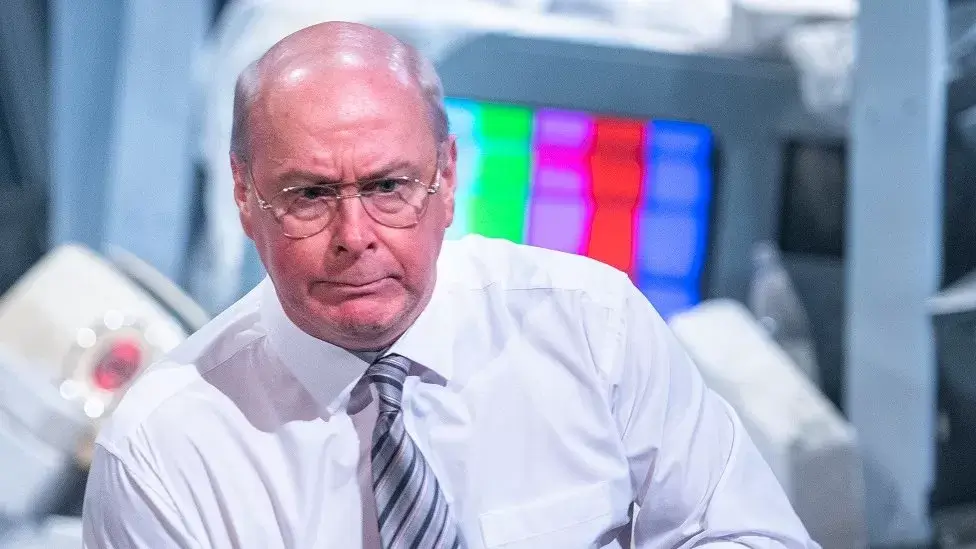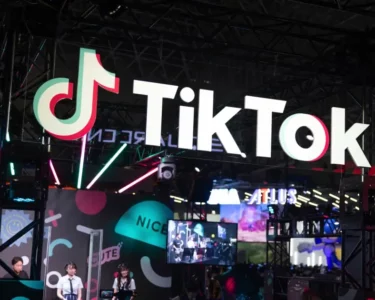Roberta Doyle was taken aback when she found herself subjected to a tirade from a football manager during a theatrical performance. Although she was merely an audience member, the virtual reality (VR) headset she was wearing made the rant feel disturbingly real.
The play, titled “Smile,” focused on the life of renowned Dundee United manager Jim McLean. When Ms. Doyle arrived at the Dundee Repertory earlier this year, she was expecting a conventional play featuring the blunt-spoken manager. However, before the show began, she was invited to a section of the foyer where VR headsets were available for curious theatergoers.
The intense preview sequence, developed by Box Office VR, had a profound impact on Ms. Doyle. Founded by Kelman and Gemma Greig-Kicks, Box Office VR aimed to expand the reach of theater to untapped audiences, drawing on the couple’s backgrounds in filmmaking and touring theater. The service required users to purchase their own headset, but it was compatible with affordable systems like Google Cardboard VR Glasses.
To watch a show, customers inserted their phones into the VR device. Once in place, users strapped the cardboard goggles around their heads and plugged in their own headphones. The accompanying app streamed a recorded performance to the phone, which the VR headset amplified, providing viewers with a 180-degree view of the stage and auditorium.
Box Office VR primarily targeted individuals who might not have considered attending a theater performance or were physically unable to reach a venue. However, the service had a relatively small audience, with only around 100 people having downloaded a show through Box Office VR.
Although Box Office VR was a passion project for the Greig-Kicks couple, they recognized its potential. The service allowed for the hosting of shows that might otherwise be impractical to tour due to size or cost constraints. In addition to “Smile,” Box Office VR had filmed other productions, including one for London’s Sadler’s Wells dance theatre, which had its own Digital Stage label for online performances. Established names like the York Theatre Royal had also experimented with making shows available via VR headsets.
While Box Office VR was an interesting application of virtual reality, it did not have the same impact as the multi-billion-dollar investments made by technology giants like Meta (formerly Facebook) and Apple, which had recently launched its VR system in June. However, for financially challenged regional theaters, any exposure or additional revenue was welcomed.
Moreover, the technology provided an exciting way to introduce schoolchildren to theater. Lisa Kilbride, a drama teacher at Monifieth High School in Dundee, recognized the value of Box Office VR in her mission to foster a love for theater. As the school served a large rural catchment area, some students had to travel nearly an hour by bus, making evening trips to see plays problematic for those with distant homes to return to.
Ms. Kilbride’s drama teaching extended beyond acting, as her students were studying for Scottish Qualifications Authority (SQA) exams and acquiring skills necessary for theater directing, lighting, and sound. The VR headsets sparked excitement among her 12- and 13-year-old SQA students, and everyone eagerly embraced the opportunity to experience theater through the simple goggles.
She believed that the VR headsets were valuable additions to her teaching toolkit, using them to entice reluctant theater-goers into a completely new experience. The ability to pause and rewind the action allowed for in-depth discussions about lighting, sound, and set design.
For Ms. Kilbride, sharing the thrill of theater meant everything. If even one child expressed a desire to go to the theater after using the VR headset, she considered it a success.
The VR goggles not only showcased the action on stage but also allowed viewers to explore the theater itself. Ms. Kilbride wanted her students to become familiar with the entire world surrounding the stage, an environment they had never encountered before. When her students tilted their heads up and looked around, they were marveling at the interior of the Dundee Rep, an experience they had never before witnessed.
Liam Sinclair, the business manager at the Dundee Rep, understood the impact of early exposure to theater. His own career was inspired by a brilliant drama teacher at school who instilled in him a fascination with how theater worked.
Mr. Sinclair observed that “Smile” brought a new audience to his venue, attracting those who were passionate about football and the Dundee United team. The use of Box Office VR made a profound impression on the late manager’s living relatives. During the press night, a film version of the play was shown using VR goggles, and Jim’s family members participated, putting on the goggles themselves. As they watched the VR footage, they became emotional, feeling as though Jim was present and in the room.
This realization led Mr. Sinclair to believe that technology could evoke deeper emotions than a stage performance. He noted that VR was a highly personal experience, unlike theater, which was communal.
Ms. Doyle echoed this sentiment, jokingly stating, “Once you’re sworn at by Jim McLean, you stay sworn at!” Her memorable theater experience through VR technology had a lasting impact.





